The stone statues on Easter Island have been discovered by archaeologists to have submerged bodies, containing many mysteries and important evidence about the civilization on this island.
887 Moai statues, the works of the Rapa Nui people, the first inhabitants of the island (settling from 300 – 400 AD), were carved between 1250 and 1500 at a site believed to be where King Hoto-Matua first anchored his boat in the Aneka area. This area is now one of the rare beaches on the rocky island.
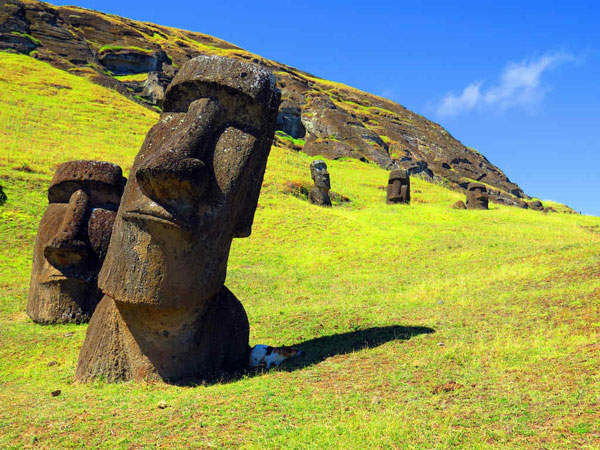
The Moai statues on Easter Island remain a profound mystery for humanity.
Even today, scientists are still puzzled over the question of what the Rapa Nui people built the Moai statues for and how they moved these gigantic statues buried throughout the island.
For a long time, many believed that the Moai statues simply had heads protruding from the ground with nothing more. However, a recent discovery suggests that the parts buried deep underground of the Moai statues are more extensive than what is visible on the surface.
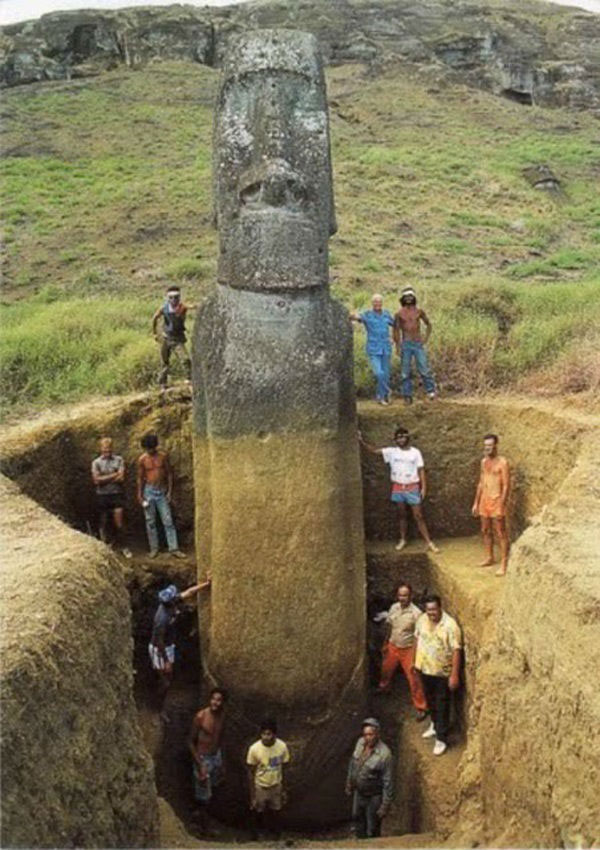
This is the submerged body of the Moai statues.
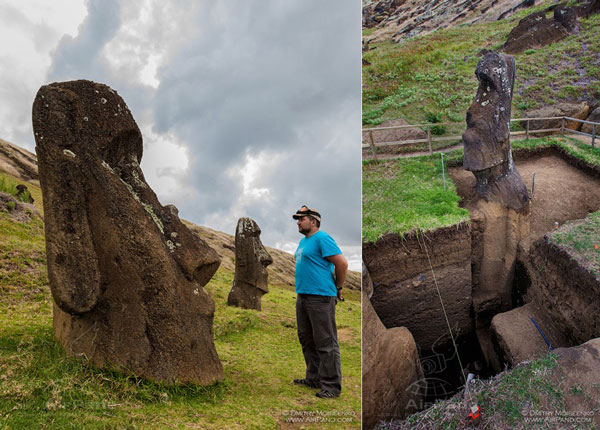
No one expected that beneath the heads of the Moai statues lies an entire giant statue.
According to Architecturendesign, most of the bodies of the statues are buried underground and are covered with inscriptions known as petroglyphs. Measurements indicate that the Moai statues weigh up to 75 tons and stand about 10 meters tall, with some being as heavy as 270 tons and reaching 21 meters in height. The long-standing secrets of the Easter Island statues may very well be decoded thanks to the petroglyphs on their bodies.
Additionally, the Moai statues feature carvings of ancient details, circular spirals, and knot shapes, which are thought to symbolize the canoes of the local Polynesian people, though this is merely a hypothesis.
The Moai statues themselves depict human-like faces and bodies made from volcanic rock, with large bodies and red scoria hats known as pukao. Most of the Moai on Easter Island were carved from a giant, easily carved volcanic tuff sourced from the Rano Raraku quarry, a particularly fascinating site due to the many abandoned statues that provide essential clues about how the statues were made. This tangible evidence is a taboo for those who somehow believe that the Easter Island heads were created by aliens!
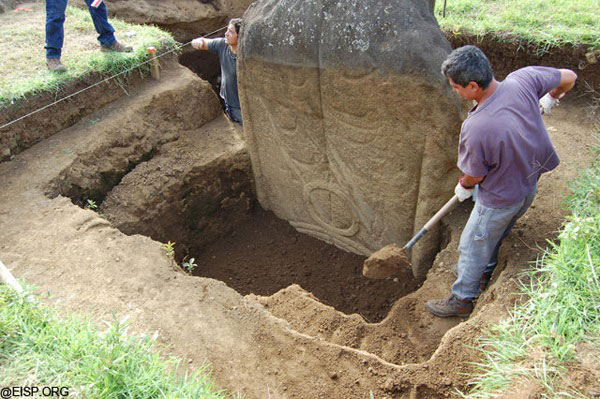
Circles and knots on the Moai statue.
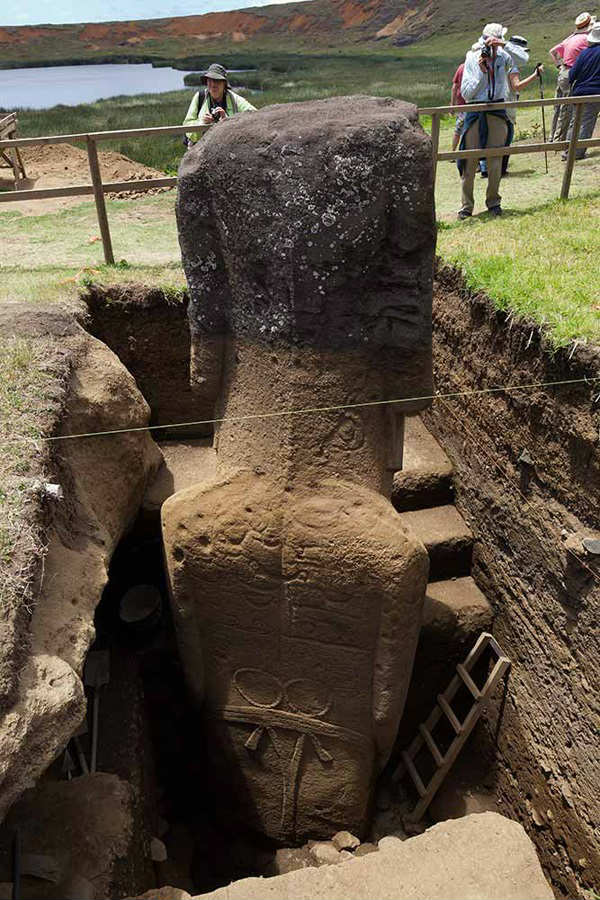
These are believed to be characters that could decode the secrets of the Moai.
Scholars have also speculated that these figures represent ancestors or important leaders of the Rapa Nui tribe – the first tribe to set foot on Easter Island. Other hypotheses suggest that they symbolize the sun and rainbows.
The excavation beneath the statues has also led scientists to discover salmon bones, leading to a hypothesis that the statues embody a plea for food, including salmon and shellfish, for the inhabitants here.
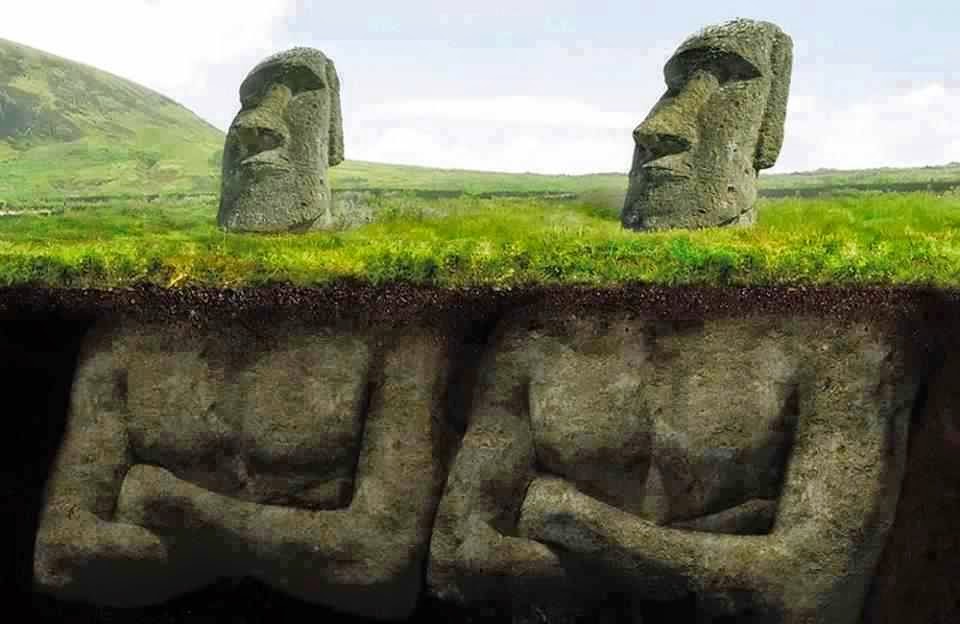
Cross-section illustration showing the lower body of the Moai statue hidden deep underground for centuries.
Easter Island (also known as Rapa Nui) is an island located off the coast of Western Chile approximately 3,700 km away. It is one of the most mysterious locations in the world due to the presence of stone statues known as Moai. The island was discovered by the Dutch explorer, Admiral Jacob Roggeveen, on Easter Sunday in 1772. The statues on the island were once thought to symbolize a forgotten civilization of the past.
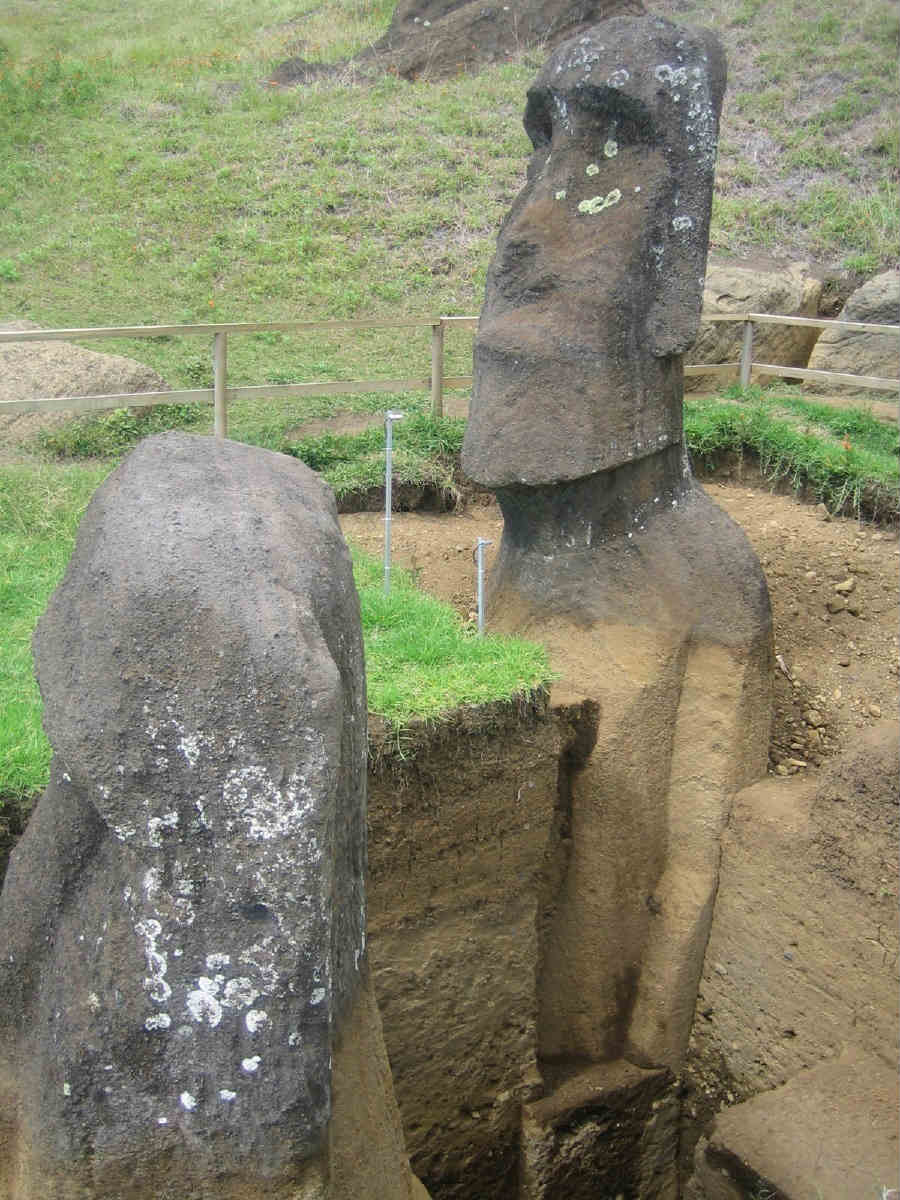
The excavation brings new hope for humanity regarding the secrets of Easter Island.
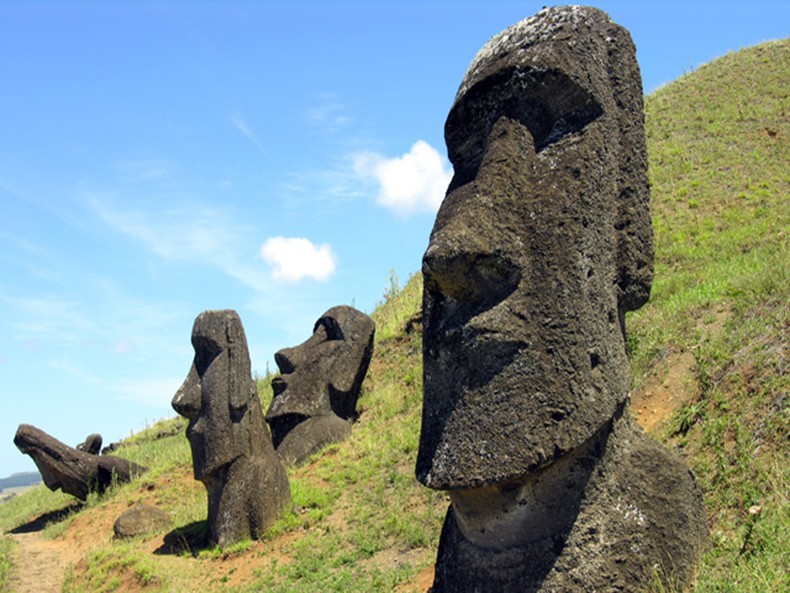
For a long time, many believed that the Easter Island statues only had heads.
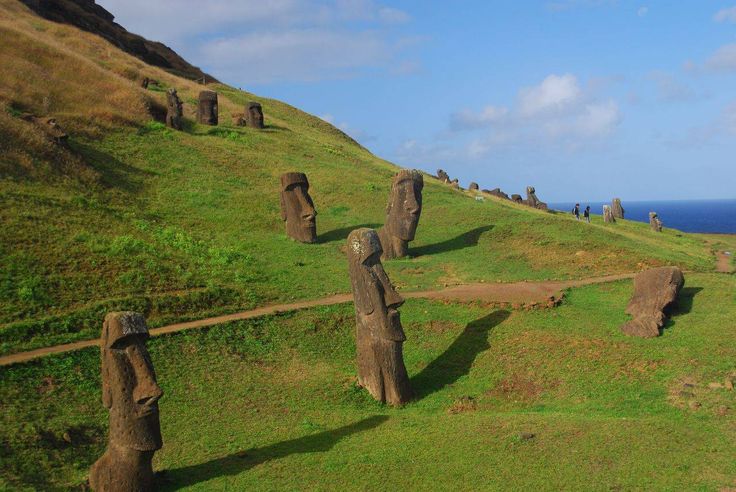
The mystery of their meaning is the reason for moving these giant statues.
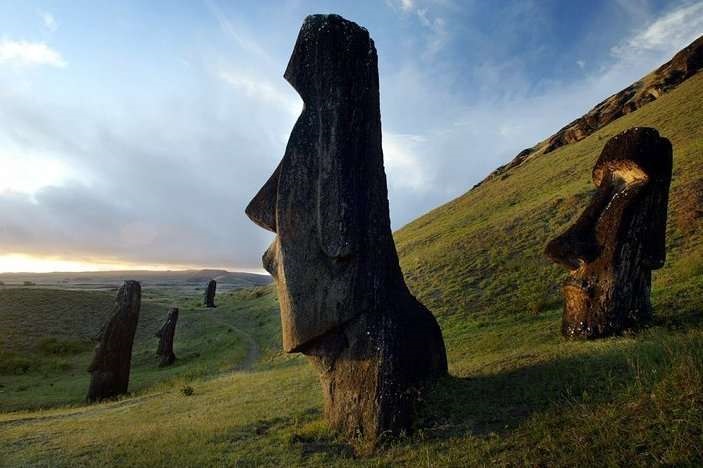
Answers to the mystery appear to be gradually unfolding.


















































